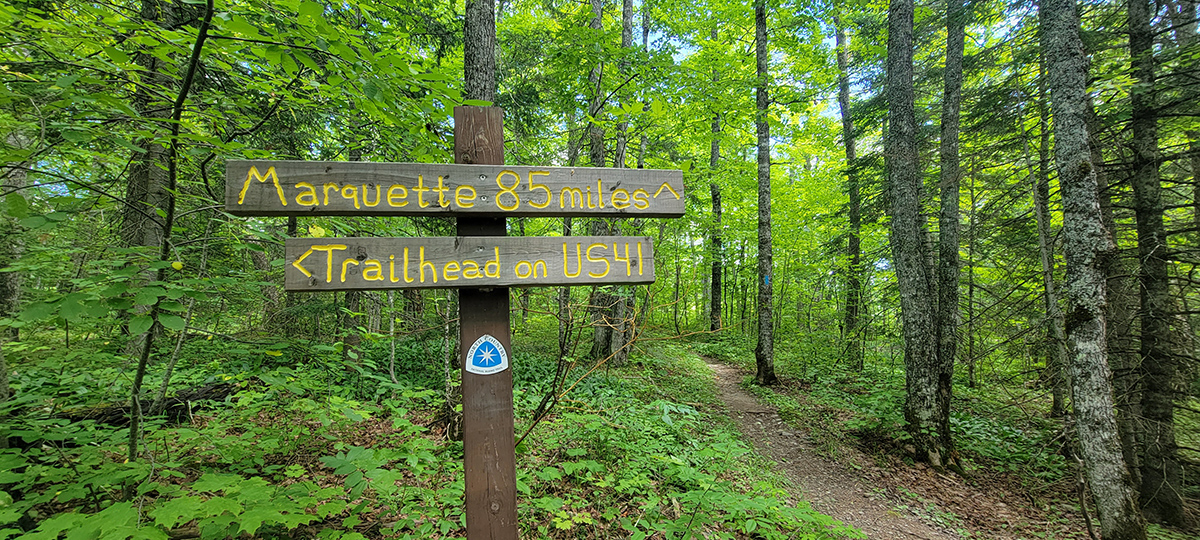WRITER | JULIE FORD
Ice fishing in the coldest corners of the world has existed for as long as humans have been sourcing food. In far-reaching northern Canada, the Inuit people fish for arctic char below five feet of ice using both traditional and modern methods. With a traditional snow chisel in often-brutal weather, they carve and chisel a long, narrow tube until the ice gives way. No live bait is used – only a line with a shiny lure is dropped below – and the patient anglers “jig” or dance the line to lure the fish as they lie flat on the ice next to a wind shelter made of snow blocks.
This is the basic premise of ice fishing: Make a hole in the ice, keep it clear, and use a tool to catch the fish. In Michigan, ice conditions can vary as much as the weather, unlike the tundra 2,000 miles north where the Inuit can safely ice fish for months. When Michigan lakes completely freeze to a thickness of five inches, the race to fish begins.
On the coldest of winter weekends, a drive around a local lake can offer quite a sight. Trucks, shanties, snowmobiles, and colorful dots of people spanning a lake signal a joyous day of ice fishing, and the equipment used can range from basic to elaborate. Here’s a basic list of gear an angler might organize the night before:
- Flat-bottomed plastic sled for transporting equipment onto the ice
- Auger (manual, electric, or gas)
- Rod and reel – much smaller than a fly or casting rod
- Lures, line, and clippers
- Tip-ups
- Ice skimmer to keep the hole clear
- Pliers and forceps to pry the hook out of the fish
- Hand warmers, water, and snacks
- Five-gallon bucket for a seat and for the fish
- Fishing license
The day typically starts early with locating a spot — as with any fishing, don’t crowd a fellow angler — and making as many holes as one can manage. It’s important to know what fish the lake holds; a six-inch diameter hole may be perfect for bluegill, crappie, and perch, but it’s definitely not big enough to land pike, walleye, or salmon. Using a rod and reel designed for ice fishing is great for the one-hole angler, while others might use a combination of rod and reel with tip-ups.
Tip-ups are ice fishing devices that sit over the hole and dangle a line with hooked bait or a lure. When the fish bites and swims away with the line, a flag “tips up,” signaling the bite. This can get frantically fun when numerous tip-ups signal at once and the angler is dashing from tip-up to tip-up to bring each catch to the surface. After the gleeful frenzy, the bait must be set again, and it’s back to waiting – in a cozy shelter or out in the elements. Whether it’s called a shanty, bobhouse, ice hut, shack, or flip-over, shelters can make the difference between fishing with an ice cream headache or in the relaxed comfort of a windproof room – especially when it’s heated.
Dressing in layers is a must for staying warm and dry. Icy winds whipping across the frozen lake can feel like an arctic blizzard. Bare fingers need to slip out of mittens to work the tip-ups, and if the body is cold, the fingers will have a difficult time rewarming. Hand warmers help, but there can’t be enough emphasis on wearing synthetic layers, sufficient boots, hats, mittens, and even a good old-fashioned snowmobile suit.
Above all, “if in doubt, don’t go out” is not just a rip current adage for surfers, it also applies to ice fishing. Before venturing out onto the ice:
- View a chart of the lake to know its depth, fish, and features
- Check its current conditions at the local bait shop
- If clear ice thickness is under five inches, stay off
- Wear ice claws under your outermost layer (like mittens on a string)
- Understand ice – snow ice or milky ice is half as stable as clear ice, so the ice depth thickness limits are doubled
- Fish with a friend, or make sure that someone knows your whereabouts and itinerary if you fish alone
To ultimately immerse oneself in the sport, enter a derby. Each January, Houghton Lake’s Tip-Up Town USA attracts thousands to its two-weekend event with ice fishing derbies and hours of family entertainment. Depending on this winter’s weather, lake towns all around Michigan may also host ice fishing derbies – an enjoyable way to participate in the sport, learn new techniques, and maybe win a prize for catching the biggest fish.
Becoming an Outdoors-Woman
Perhaps one of the best-kept secrets for learning how to ice fish is Michigan’s Becoming an Outdoors-Woman program, which is offered each year in Big Bay, near
Marquette, at the Bay Cliff Health Camp overlooking Lake Superior. Begun in Wisconsin in 1991, the basis of the BOW program is for women to experience hands-on workshops in a safe and supportive environment with kind and patient instructors.
Last February, I joined other like-minded women from Michigan and beyond who wanted to learn more about winter activities such as ice fishing, skijoring, cross-country skiing, dog sledding, winter camping, and more.
Participants can attend 3 of the 21 winter activities offered. I selected winter camping, cross-country skiing, and ice fishing. I almost picked skijoring but figured being strapped to a dog while wearing cross-country skis might not be one of my brighter ideas. I learned how to build a quinzee (hard work and a little claustrophobic) and lasted three hours overnight in a bivouac – just one camping pad between my sleeping bag and the hard-packed snow wasn’t enough to stay warm! Cross-country skiing in the beautiful wooded landscape of Big Bay after a fresh snowfall was magical, and learning how to ice fish in a blizzard with three enthusiastic DNR fisheries experts was everything I had hoped for. The unique weekend experience is well worth the drive, and the program fills very quickly. Subscribe to BOW emails for registration information at michigan.gov.
This winter, when I drive around a frozen lake teeming with anglers, I just might park the car, drop a line, and quietly wait for a fish to bite – because now I know how to do it.








